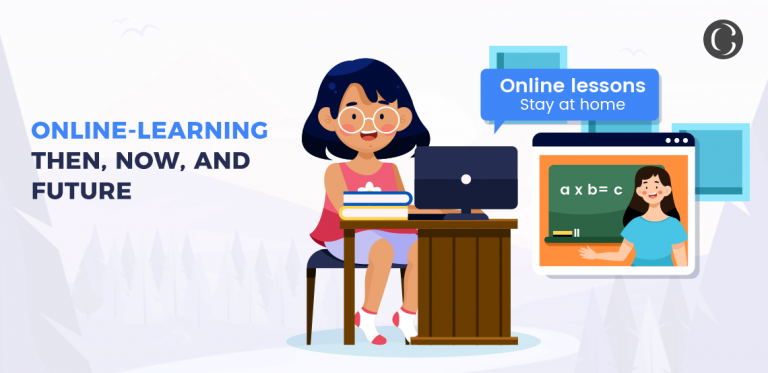Online-learning: Then, Now, and Future

Education is a foundation of human development, as it drives the economic growth of the region, builds scientific temper, improves the level of health, equality, peace, stability.
Unfortunately, traditional education institutions are no longer fit for the evolving needs of modern society. The World Bank has already warned the world of a global learning crisis.
Challenges all countries are facing is to transform the education system in such a way that the fast-changing needs of the global economy and the growing technological risks to automation met. Definitely, technology will play a huge role in shifting the way education is resourced and consumed.
As people are getting more aware of how jobs will evolve in the near future, the era of automation, and artificial intelligence, they are reaching out for softer skills such as creativity or collaboration.
We believe understanding the modern learner behavior is essential as they are not only demanding a new world of education delivery but are also willing to pay for it.
Online learning from stakeholder’s perspective:
| Stakeholders | Benefits of online learning | Concerns of online learning |
| Students |
|
|
| Teachers |
|
|
| Parents |
|
|
| Education institutions |
|
|
| Government |
|
|
| Corporates |
|
|
From idea to implementation:
(Source: https://elearninginfographics.com/)
Refer our detailed guide on the development process:
- Market research
- Identify potential userbase
- Create an MVP
- Developing a solution
- Monetize your product
- Network and funding:
Community is essential in starting your education platform for initial funding and scaling. Let us help you find the right people who can help you shape your idea, and create a sustainable model you want to accomplish.
- Education hackathon:
These are developer events often organized by incubators and accelerators. Sometimes universities also sponsor hackathons under their education or business programs.
- Startup weekends:
These are approx 54-hour events that bring together educators, entrepreneurs, developers, and designers to validate and design an ed-tech solution in this event only. It is actually a great way to determine whether your idea has enough potential or not.
- Education conferencing and meet-ups:
These are open meetings with a social impact component with speakers, panelists, etc., generally from the local community. It is more like informal opportunities for educators and entrepreneurs to explore topics at the crossroad of education and technology.
- Crowdfunding:
It is a way to raise money by asking for contributions from many supporters, often from personal networks. In return, project supporters typically receive early versions of your platform or modest gifts like t-shirts and all. The successful examples are BrightLooop and Odessey.
- Angel investors:
Angel investors are a good option for you to connect with especially when you want to raise private capital for your startup. AgelList and Investor’s circle are comprehensive platforms where you can research and connect with angel investors.
- Public-Private Partnership:
Government departments of Education and R&D often grant funding to enterprises for better services.
- Marketing:
Social media is the most valuable tool for education project promotion. Learn more about which forums, websites, and blogs they frequently visit, and use this information to strategize your marketing campaign efficiently. Other than social media, independent blogs, and specialized forums may also help you out to reach your target audience.
Future of online learning:
(Source: https://www.simplek12.com/wp-content/uploads/2016/04/evolution-of-edtech.png)
Automatic learning is supposed to be a future of e-learning. Here’s how it works:
You pick a task, let’s say catching a ball. Then you go find someone who knows how to catch a ball, place him in an fMRI machine, and record what’s going on in his brain while he visualizes catching a ball.
Now, put yourself into the fMRI machine, and rig it to induce that ball-catching imagery you recorded earlier, in your brain using neurofeedback. You don’t even have to pay attention while all of this is going on. Your brain becomes familiar with that pattern.
This type of automated learning is a potential outcome of e-learning in the distant future and can cause long-lasting improvement in tasks that require visual performance.
We, at Coruscate, have researched in-depth about the e-learning platform, Ed-tech, and successfully delivered much software in this field. We are now capable of delivering an ed-tech solution within just 3 days.

Contact us now to get personalized quotes and live project demo for your idea.








